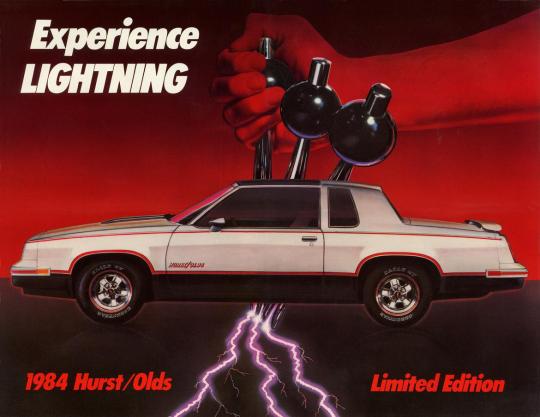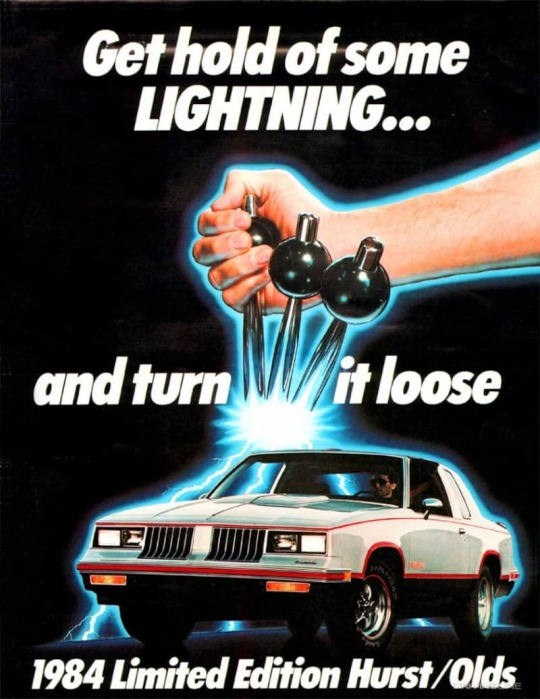#Olds Cutlass 442
Explore tagged Tumblr posts
Text
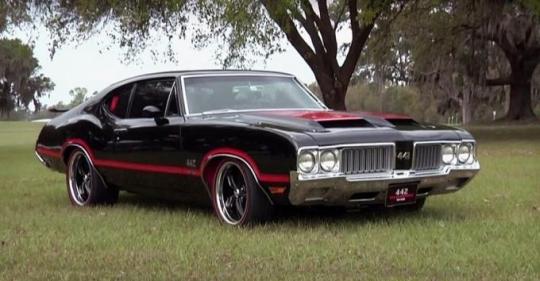
1970 Olds Cutlass 442
1970 Olds Cutlass 442 With A 7.5 Liter Big-Block V8 Engine
574 notes
·
View notes
Photo

Classic Cutlass 442 by Oldsmobile.
#olds#cutlass#442#badge#vintage#classic#american#muscle#car#detail#green#chrome#40mm#hi-fi fotos#Hallewell
313 notes
·
View notes
Photo
Oldsmobile Cutlass 442 Convertible

13 notes
·
View notes
Photo



You see a lot nice looking Olds, of the 1970-1972 vintage, out there. The common thing is that they all seem to have the large side stripes. Not all of Olds performance cars had the same stripes. Upper left is the classic W-30. It had Thin, constant size stripe, with a constant size space and then a variable size thick stripe. You will notice that the W-31 had the same stripe. That is the car just below the W-30. How ever it has Cutlass script and the W-31 badge below it and was not a 442. Both the W-30 and the W-31 had the appropriate badge. The 442, upper right, has a Thin constant size stripe, a constant size gap and a constant size medium size stripe. Other than the 442 numbers, there are no other badges.
The 1970 pace car has the 442 stripes with the addition of a small constant size stripe below the medium.
The 1972 pace car has stripes that are more reminiscence of the 1969 Hurst Olds, since it was actually a Hurst Olds. Colors of the strip in 1970 were: Black,White,Red,Blue and Gold. In 1971 the available colors were: Black, White,Blue, Gold and Green. In 1972 The available colors were: Black,White,Saddle Tan,Green and Covert Beige. The exception being the two years of Pace Cars. You will notice that all of the pictures here show the fiberglass Ram Air hood. This was standard on the W and Pace cars. It was an option,W-25, on any Cutlass or 442. Red front wheel wells were only on the W-30.
The only exception on the 442, was that in 1972, it was an option. So there may or may not be Cutlass script on the car. Enjoy.
Point of fact. Some of this information comes from TCP Global. Their Auto Color Library has been a great tool for me to use over the years.
17 notes
·
View notes
Text
The Oldsmobile 442 represents one of the most iconic muscle cars of the 1960s and 1970s. Its unique name immediately conjures images of powerful V8 performance in a iconic package. But what exactly does 442 stand for on these classic Oldsmobiles? The numbers and branding have an important historical meaning tied to the model's origins. This in-depth guide will examine the story behind the 442 name and explain what each digit signifies on this legendary machine. We’ll cover: The origins and creation of the 442 What the 4, 4, and 2represent in the name Engine specs tied to 442 badging Special edition 442 models Decoding 442 identification codes Common myths and misconceptions Understanding the heritage behind the 442 provides deeper appreciation for these iconic performance cars. Read on to learn the complete story behind one of Oldsmobile’s most famous set of numbers! Origins of the Oldsmobile 442 The Oldsmobile 442 made its debut in 1964 as an optional package on the F-85 and Cutlass models. It was the brainchild of Oldsmobile engineer Joe Wolfram, who conceived the 442 as a way to lump all of the division’s performance parts into one package. The name 442 specifically highlighted three key components of the muscle car recipe: 4-barrel carburetor 4-speed manual transmission Dual 2-inch exhausts This powerful drivetrain transformed the midsize F-85 and Cutlass into muscle cars capable of seriously competing against Pontiac, Buick and other brands on the track and strip. The 442 package proved so popular that Oldsmobile decided to spin it off into its own distinct model in 1968. A legend was born that turned the 442 into a performance icon of the era. What Does 4 Stand For in 442? The first 4 in 442 refers to the 4-barrel carburetor that came standard for these high-performance engines. 4-barrel carbs had four separate barrels containing fuel jets and air inlets. This allowed more fuel and air into the engine compared to a simple 1-barrel or 2-barrel carb. The increased airflow resulted in significant horsepower gains. Some quick history on the significance of 4-barrel carbs: More airflow - Four separate barrels and venturis improved airflow over fewer barrels. Multiple primaries - Having two primary and two secondary barrels provided economy during cruising plus max power when stomping the gas. Performance standard - By the 1960s, 4-barrel carbs had become standard equipment for V8 performance engines across brands. The first digit in 442 tells us these Oldsmobiles came armed with serious high-performance 4-barrel carburetion. What Does the Second 4 Stand For? The middle 4 represents the 4-speed manual transmission equipped in all 442 cars. When originally launched, a heavy-duty close-ratio 4-speed manual was mandatory equipment with the 442 package. A 3-speed automatic wasn’t even offered until 1967. The 4-speed stick shift delivered several performance advantages: Quick, precise shifting Kept engines in ideal power band Maximized acceleration Matched revs for quicker shifts Better drivetrain durability under abuse A manual transmission was considered essential for serious performance. The second 4 in 442 tells buyers this Olds packed a beefy 4-speed standard. What Does 2 Represent in Olds 442? The final 2 denotes the dual exhaust system these cars came equipped with. High-performance V8 engines needed free-flowing exhausts to breathe properly and minimize backpressure. Dual exhausts split flow between two pipes rather than one, reducing backpressure substantially compared to a single pipe. Benefits of the dual exhaust in the 442: Increased exhaust flow improved power Separate pipes optimized scavenging Reduced backpressure for smoother flow Signature exhaust note for intimidation The final 2 in 442 confirms these Oldsmobile engines were equipped with a tuned dual exhaust ideal for no-compromise performance.
Oldsmobile 442 Engine Specifications In keeping with its performance pedigree, the 442 always came equipped with serious V8 muscle under the hood. Here are some key specs on the engines: 1964-1967 330 cubic-inch V8 310 to 345 horsepower 10.25:1 compression ratio Hydraulic lifter camshaft 4-barrel carburetor Dual exhaust 1968-1969 400 cubic-inch V8 325 to 350 horsepower 10.5:1 compression Mechanical lifter cam Aluminum intake manifold 4-barrel carb Dual exhaust 1970-1972 455 cubic-inch V8 310 to 370 horsepower 10.5:1 compression High-lift camshaft Aluminum intake 4-barrel carburetor Dual tailpipes These high-winding, high-compression V8s perfectly aligned with the performance image of the 442. Special Edition Oldsmobile 442 Models In addition to the standard 442, Oldsmobile offered several legendary special-edition performance models over the years: 442 W-30 Lightweight body panels Specially tuned engine Unique intake/carb High-lift camshaft Force-air induction Dual exhaust with crossover TH400 automatic transmission Anti-sway bars & suspension kit W-25 Ram Air hood 442 Hurst/Olds Custom graphics and paint Hurst shifter Lightened body panels H.O. 455 V8 engine Force-air induction California custom tripower carb Dual exhaust with H-pipe TH400 automatic transmission Upgraded suspension kit Front and rear spoilers 442 Cutlass Supreme Luxury 442 model Renamed to Cutlass Supreme in 1973 Appointment upgrades Strato bucket seats Custom interior trim Full instrumentation Console Radial tires Woody exterior trim These special editions took 442 performance to even higher levels. How to Decode 442 VIN Numbers Oldsmobile 442 VIN numbers provide a lot of useful information once you know how to decipher them. Here’s how to break down a typical 442 VIN: 3 - Oldsmobile division 42 - 442 model 37 - 3 for Oldsmobile engine, 7 denotes Big Block 455 V8 M - Assembled in Lansing, MI plant 7 - Model year (1977) 151667 - Unit sequential production number So VIN 3R42M7XXXXXX decodes to a 1977 Oldsmobile 442 with a 455 Big Block V8 assembled in Michigan. Easy once you know the key! Common Myths and Misconceptions Given its legendary status, the Oldsmobile 442 is also prone to some common myths and misconceptions: Myth: 442 denotes a 4-speed, 4-barrel carb, 2-exhaust Fact: It actually stood for 4-barrel carb, 4-speed trans, and dual exhaust. Myth: All 442s were red, white, and blue Fact: That color scheme was popular but 442s were produced in many color combinations. Myth: The 442 was the first muscle car Fact:Pontiac GTO, Plymouth Road Runner and others pre-dated the 442 by a few years. Myth: Only V8s came in the 442 Fact: Some early models could be equipped with 6-cylinder engines. Myth: The 442 was built from 1964-1974 Fact: Production actually ended in 1976 in the US, continuing until 1981 in Canada. Make sure to get the real facts on one of Oldsmobile's greatest performance models! Why 442 Branding Was Significant The 442 name brilliantly captured the essence of these cars - optimizing all the essential ingredients for standout V8 performance. It immediately communicated the 442’s performance pedigree with: 4-barrel carb for max airflow feeding the engine 4-on-the floor manual gearbox for quick acceleration Dual exhaust for free-breathing power The logo also looked cool, with a vintage ‘60s vibe. For buyers, seeing 442 badging signaled serious performance capability from Oldsmobile. FAQs What does the 442 stand for on Oldsmobile models? The 442 stands for: 4 - 4-barrel carburetor 4 - 4-speed manual transmission 2 - Dual exhaust This combination optimized high-performance for the engine, drivetrain, and exhaust. What engines came in the Olds 442 muscle car?
Popular V8s included: 330 cubic-inch V8 making 310-345 hp 400 cubic-inch V8 making 325-360 hp 455 cubic-inch Big Block V8 making 310-370 hp The 442 always came with serious V8 muscle. What was the meaning of the W-30 on special edition 442s? W-30 stood for the lightweight Olds performance parts on these models: W - Special engine tuning 3 - TH400 3-speed automatic transmission 0 - Rear axle ratio So W-30 denoted specially optimized drivetrain components. How can I decode the VIN number on an Olds 442? A typical 442 VIN reveals: Make (Oldsmobile) 442 Model Engine Assembly plant Model year Build sequence Knowing positions reveals manufacturing details. Were all 442 models painted red, white and blue? No. While that was a popular scheme, the 442 was produced in many colors over its lifetime ranging from basic white/black to wild neon hues in the 1970s. It came in almost every major color combo. The 442 name tells the story of one of history’s greatest muscle cars. Understanding the heritage behind the logo provides deeper connection to an iconic Oldsmobile performance model. #Wiack #Car #CarInsurance #CarRental #CarPrice #AutoLoans
0 notes
Text
The Oldsmobile 442 represents one of the most iconic muscle cars of the 1960s and 1970s. Its unique name immediately conjures images of powerful V8 performance in a iconic package. But what exactly does 442 stand for on these classic Oldsmobiles? The numbers and branding have an important historical meaning tied to the model's origins. This in-depth guide will examine the story behind the 442 name and explain what each digit signifies on this legendary machine. We’ll cover: The origins and creation of the 442 What the 4, 4, and 2represent in the name Engine specs tied to 442 badging Special edition 442 models Decoding 442 identification codes Common myths and misconceptions Understanding the heritage behind the 442 provides deeper appreciation for these iconic performance cars. Read on to learn the complete story behind one of Oldsmobile’s most famous set of numbers! Origins of the Oldsmobile 442 The Oldsmobile 442 made its debut in 1964 as an optional package on the F-85 and Cutlass models. It was the brainchild of Oldsmobile engineer Joe Wolfram, who conceived the 442 as a way to lump all of the division’s performance parts into one package. The name 442 specifically highlighted three key components of the muscle car recipe: 4-barrel carburetor 4-speed manual transmission Dual 2-inch exhausts This powerful drivetrain transformed the midsize F-85 and Cutlass into muscle cars capable of seriously competing against Pontiac, Buick and other brands on the track and strip. The 442 package proved so popular that Oldsmobile decided to spin it off into its own distinct model in 1968. A legend was born that turned the 442 into a performance icon of the era. What Does 4 Stand For in 442? The first 4 in 442 refers to the 4-barrel carburetor that came standard for these high-performance engines. 4-barrel carbs had four separate barrels containing fuel jets and air inlets. This allowed more fuel and air into the engine compared to a simple 1-barrel or 2-barrel carb. The increased airflow resulted in significant horsepower gains. Some quick history on the significance of 4-barrel carbs: More airflow - Four separate barrels and venturis improved airflow over fewer barrels. Multiple primaries - Having two primary and two secondary barrels provided economy during cruising plus max power when stomping the gas. Performance standard - By the 1960s, 4-barrel carbs had become standard equipment for V8 performance engines across brands. The first digit in 442 tells us these Oldsmobiles came armed with serious high-performance 4-barrel carburetion. What Does the Second 4 Stand For? The middle 4 represents the 4-speed manual transmission equipped in all 442 cars. When originally launched, a heavy-duty close-ratio 4-speed manual was mandatory equipment with the 442 package. A 3-speed automatic wasn’t even offered until 1967. The 4-speed stick shift delivered several performance advantages: Quick, precise shifting Kept engines in ideal power band Maximized acceleration Matched revs for quicker shifts Better drivetrain durability under abuse A manual transmission was considered essential for serious performance. The second 4 in 442 tells buyers this Olds packed a beefy 4-speed standard. What Does 2 Represent in Olds 442? The final 2 denotes the dual exhaust system these cars came equipped with. High-performance V8 engines needed free-flowing exhausts to breathe properly and minimize backpressure. Dual exhausts split flow between two pipes rather than one, reducing backpressure substantially compared to a single pipe. Benefits of the dual exhaust in the 442: Increased exhaust flow improved power Separate pipes optimized scavenging Reduced backpressure for smoother flow Signature exhaust note for intimidation The final 2 in 442 confirms these Oldsmobile engines were equipped with a tuned dual exhaust ideal for no-compromise performance.
Oldsmobile 442 Engine Specifications In keeping with its performance pedigree, the 442 always came equipped with serious V8 muscle under the hood. Here are some key specs on the engines: 1964-1967 330 cubic-inch V8 310 to 345 horsepower 10.25:1 compression ratio Hydraulic lifter camshaft 4-barrel carburetor Dual exhaust 1968-1969 400 cubic-inch V8 325 to 350 horsepower 10.5:1 compression Mechanical lifter cam Aluminum intake manifold 4-barrel carb Dual exhaust 1970-1972 455 cubic-inch V8 310 to 370 horsepower 10.5:1 compression High-lift camshaft Aluminum intake 4-barrel carburetor Dual tailpipes These high-winding, high-compression V8s perfectly aligned with the performance image of the 442. Special Edition Oldsmobile 442 Models In addition to the standard 442, Oldsmobile offered several legendary special-edition performance models over the years: 442 W-30 Lightweight body panels Specially tuned engine Unique intake/carb High-lift camshaft Force-air induction Dual exhaust with crossover TH400 automatic transmission Anti-sway bars & suspension kit W-25 Ram Air hood 442 Hurst/Olds Custom graphics and paint Hurst shifter Lightened body panels H.O. 455 V8 engine Force-air induction California custom tripower carb Dual exhaust with H-pipe TH400 automatic transmission Upgraded suspension kit Front and rear spoilers 442 Cutlass Supreme Luxury 442 model Renamed to Cutlass Supreme in 1973 Appointment upgrades Strato bucket seats Custom interior trim Full instrumentation Console Radial tires Woody exterior trim These special editions took 442 performance to even higher levels. How to Decode 442 VIN Numbers Oldsmobile 442 VIN numbers provide a lot of useful information once you know how to decipher them. Here’s how to break down a typical 442 VIN: 3 - Oldsmobile division 42 - 442 model 37 - 3 for Oldsmobile engine, 7 denotes Big Block 455 V8 M - Assembled in Lansing, MI plant 7 - Model year (1977) 151667 - Unit sequential production number So VIN 3R42M7XXXXXX decodes to a 1977 Oldsmobile 442 with a 455 Big Block V8 assembled in Michigan. Easy once you know the key! Common Myths and Misconceptions Given its legendary status, the Oldsmobile 442 is also prone to some common myths and misconceptions: Myth: 442 denotes a 4-speed, 4-barrel carb, 2-exhaust Fact: It actually stood for 4-barrel carb, 4-speed trans, and dual exhaust. Myth: All 442s were red, white, and blue Fact: That color scheme was popular but 442s were produced in many color combinations. Myth: The 442 was the first muscle car Fact:Pontiac GTO, Plymouth Road Runner and others pre-dated the 442 by a few years. Myth: Only V8s came in the 442 Fact: Some early models could be equipped with 6-cylinder engines. Myth: The 442 was built from 1964-1974 Fact: Production actually ended in 1976 in the US, continuing until 1981 in Canada. Make sure to get the real facts on one of Oldsmobile's greatest performance models! Why 442 Branding Was Significant The 442 name brilliantly captured the essence of these cars - optimizing all the essential ingredients for standout V8 performance. It immediately communicated the 442’s performance pedigree with: 4-barrel carb for max airflow feeding the engine 4-on-the floor manual gearbox for quick acceleration Dual exhaust for free-breathing power The logo also looked cool, with a vintage ‘60s vibe. For buyers, seeing 442 badging signaled serious performance capability from Oldsmobile. FAQs What does the 442 stand for on Oldsmobile models? The 442 stands for: 4 - 4-barrel carburetor 4 - 4-speed manual transmission 2 - Dual exhaust This combination optimized high-performance for the engine, drivetrain, and exhaust. What engines came in the Olds 442 muscle car?
Popular V8s included: 330 cubic-inch V8 making 310-345 hp 400 cubic-inch V8 making 325-360 hp 455 cubic-inch Big Block V8 making 310-370 hp The 442 always came with serious V8 muscle. What was the meaning of the W-30 on special edition 442s? W-30 stood for the lightweight Olds performance parts on these models: W - Special engine tuning 3 - TH400 3-speed automatic transmission 0 - Rear axle ratio So W-30 denoted specially optimized drivetrain components. How can I decode the VIN number on an Olds 442? A typical 442 VIN reveals: Make (Oldsmobile) 442 Model Engine Assembly plant Model year Build sequence Knowing positions reveals manufacturing details. Were all 442 models painted red, white and blue? No. While that was a popular scheme, the 442 was produced in many colors over its lifetime ranging from basic white/black to wild neon hues in the 1970s. It came in almost every major color combo. The 442 name tells the story of one of history’s greatest muscle cars. Understanding the heritage behind the logo provides deeper connection to an iconic Oldsmobile performance model. #Wiack #Car #CarInsurance #CarRental #CarPrice #AutoLoans
0 notes
Photo
The Olds Cutlass 442, muscle car par excellence. Clean lines and lots of power.

214 notes
·
View notes
Text
NIGHT TRAIN – Donnie Phillips/Chris Kenney
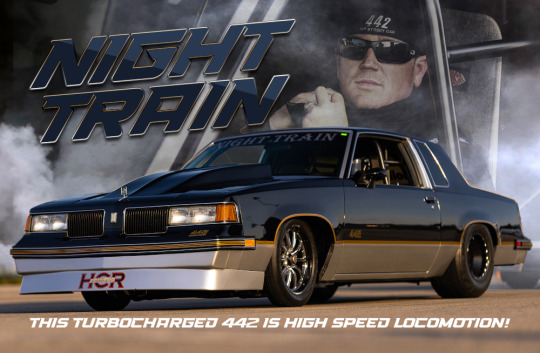
For whatever reason, back in the day, Oldsmobile adopted the term “Rocket” and used it to identify many of their V8 engines from 1949 to 1990 along with a model; the Rocket 88, which was instrumental in creating the performance and race car movement we know today. Olds made some cool cars, but none were as popular among enthusiasts as the Cutlass. Option package models were born of the Cutlass and included the Supreme, the Hurst Olds and the 442. Want to share this with a friend...share this link Read the full article
0 notes
Text
Driving a 67 Olds Cutlass 442
Driving a '67 Olds Cutlass 442 ✅ Subscribe to Our Channel for More Cars, Tips & Resources: https://www.youtube.com/c/TwoGuysandaRide/ ✅ Stay Connected 👉 Twitter: https://twitter.com/GuysRide 👉 Instagram: https://www.instagram.com/twoguysandaride/ 👉 TikTok: https://www.tiktok.com/@twoguysandaride ============================= ✅ SEE more videos here: Indian Motorcycle: https://youtu.be/SLBO5avU2Zg ✅ Other Videos You Might Be Interested In Watching: 🚘 Honda Gold Wing: https://youtu.be/-4fBYxvtbh4 🚘 Harley Davidson Road Glide: https://youtu.be/YJIvyrdb1Xw 🚘 BackBone Built Custom Bikes: https://youtu.be/fseDrXfUXeg 🚘 2KTM 890 Adventure: https://youtu.be/vtpMEz5I0i4 ================================= Special Thanks to: The Shed, Warroad MN - Bob, Doug and Rick ================================= ✅ About Two Guys and a Ride: Two Guys and a Ride’s channel is dedicated to all things automotive. We love driving and reviewing vehicles and sharing what each one has to offer. We give you the facts where others just state their opinions. We also tell the stories of some very cool and interesting classic cars and along the way, we’ll even show you the latest and greatest Boats, Watercraft, Snow Sleds, Side by Sides and Motorcycles. Let’s go for a ride! ================================= #twoguysandaride #carsoftheday #CarReview #CarReviews #ClassicCar #ClassicCars #ClassicBoat #HowTo #TechHowTo #CarTech #Racing #PontoonBoat #Ford #Chevy #Honda #Toyota #Porsche #Honda #Toyota #Chevrolet #Buick #KIA #Hyundai #GMC #Volvo #Mercedes #Polestar #Ferrari #CarReview #CarReviewChannel #NewCars #Pontoon #FishingBoat #4Wheeler #OffRoad #Dirt #Snow #Sand #Water #Technology #Tech #Bentley #Jaguar #LandRover #Audi #BMW **All Specs are preliminary data from MFG available at time of filming this video. Subject to change** Copyright Disclaimer: Under Section 107 of the Copyright Act 1976, allowance is made for "fair use" for purposes such as criticism, comment, news reporting, teaching, scholarship and research. Fair use is a use permitted by copyright statute that might otherwise be infringing. Non-profit, educational or personal use tips the balance in favor of fair use. This Channel contains OUR Copyrighted Material and is not Available for any use outside of our Channel. All Rights Reserved © Two Guys and a Ride https://ifttt.com/images/no_image_card.png https://www.youtube.com/watch?v=LKIefSI9U-M
#reviews#car#crossovers#trucks#autos#auto#driven#cars#classic#vehicles#automobile#carreviews#performance#race#racing
0 notes
Text
Michael Savage New Canaan Ten Traditional Muscle Vehicles
With the appeal of motion pictures like The Fast as well as The Furious, Gone in Sixty Seconds as well as The last Trip, there has been some reference to the great old muscular tissue vehicles which were commemorated in movies like Bullit, Vanishing Point and also naturally The Dukes of Hazzard collection. This top 10 listing looks at several of the muscle auto icons born from the late 60's and also very early 70's.
The major measure of these autos is power, with Brake Steed Power (bhp) being the term flung around most frequently. What this describes is the power released by the engine before the transmission, generator, differential, water pump, and also various other parts sap its power. If you are utilized to Kilowatts, after that think about that 250kw translates to 335.26 bhp.
The 1969 Pontiac GTO
Conceptualised to gain attract the more youthful market, Pontiac placed a 6.3 litre V8 engine into the midsized Tempest shell, creating a cheap rapid car. To the shock of Pontiac's advertising and marketing group the GTO became massively popular and also in 1969 they fitted it with a 6.5 litre V8 which might kick out 366bhp. The Judge was birthed.
The 1970 Buick GSX
Michael Savage New Canaan
Once again the concept right here was to squash a beast of an engine right into a midsized body, in this instance the Buick Skylark. In 1967 the Buick GS came to be recognised as a standalone design available as a sedan and convertible.
The 1970 version was provided an impressive 7.5 litre engine efficient in producing 400bhp. The GSX body can be found in yellow or white just, including in the photo which made this cars and truck an unique classic.
The 1967 Chevrolet Camaro
There were different options available to those buying a very first generation Camaro, the Z28 bundle being one of the most interesting. With a 4.9 litre engine, power steering, disc brakes on the front and a four speed hands-on gearbox, the Z28 was produced racing - creating up to 400bhp.
The Plymouth Roadrunner
Developed to defeat 14 secs over a quarter mile, the Plymouth Roadrunner was stripped down to the bare fundamentals, sacrificing also the rugs in order to make this into a monster of a maker. It included a beefed up guiding, brake and shock absorber and a 6.3 litre engine which pressed 335bhp. An optional boost originated from the 7.0 litre version's 425bhp.
The Dodge Opposition
Hitting the market in 1970, the Dodge Opposition was a hit from the get go, offering greater than 80,000 in the first year. Although numerous alternatives were provided, the R/T is the model which draws in one of the most interest with its 7.0 litre Hemi engine rejecting 425bhp. Later on designs lost the story, with the '72 model going down to a meager 240bhp. See the Challenger in the cult timeless flick, Vanishing Factor.
The 1966 Ford Fairlane GT
Introduced in '62 with a 3.6 litre V8, the Ford Fairlane was provided a transformation in 1966, total with a 6.4 litre engine capable of 335bhp. As if this were inadequate they chose to upgrade to a 7.0 litre NASCAR engine with 435bhp. Rigid front suspension and also disc brakes provided the vehicle much better taking care of, and the brute power kicked the dial over 60mph (100km/h) in six seconds.
Oldsmobile 442
Michael Savage New Canaan
The Cutlass model was outfitted with a cops spec engine with the ability of 310bhp. The 442 refers to the four barrel carburettor, four speed hands-on gear box and the twin exhausts. The 442 had a credibility for its handling when contrasted to various other muscle mass autos, many thanks to its enhanced springs, shocks as well as the calming safety of an anti-roll bar.
The 1968 version was redesigned as a hot sports car, with a 7.5 litre block blowing up 390bhp.
Plymouth Barracuda
Although the Barracuda was launched in 1964, simply a couple of weeks before the Ford Mustang, it was not till 1970 that Plymouth obtained larger popularity with attractive lines and also some serious roar under the hood in the kind of a 7.2 litre 390bhp. The various other choice was a smaller sized 7.0 litre Hemi block which knocked senseless some added power at 425bhp!
Despite having an overhauled suspension the power was so much that the 'Cuda gained a credibility for difficult handling.
The 1970 Chevrolet Chevelle SS
The 1965 Chevelle SS sported a 6.5 litre block pushing 375bhp, which was all too much for the front end of the car, making for some pretty terrible handling. Fortunately this was attended to with the revamping of the suspension as well as the addition of disk brakes on the front.
1969 saw the introduction of the leading engine specification, which was included in the El Camio pick-up as well. The 1970 SS was powered by a 7.4 litre V8 with 450bhp drawing the Chevell to 100km/h in just 6 seconds. Later on designs were readjusted for unleaded fuel and also the power result experienced considerably.
Dodge Battery charger
Bo as well as Battle each other's ride of selection, the Charger was launched in 1966 and some 37,000 autos were offered in the initial year. A 7.0 litre Hemi reputedly rejected around 500bhp, though it was formally rated at 425bhp. This beast reached 100km/h in just 5 and a fifty percent seconds. The Hemi engine choice was available till 1972.
0 notes
Text

1970 Oldsmobile Hurst/Olds
One-Of-One Oldsmobile Left For Dead’
The one-of-one 1970 Oldsmobile Hurst/Olds (H/O) has an intriguing backstory. Originally built at the Lansing, Michigan plant, which was the main production facility for Oldsmobile during that era, this unique H/O was part of an effort by Hurst to convince Oldsmobile to continue limited production of special performance models, as they had in 1968 and 1969.
Despite its one-of-a-kind status, the car was eventually forgotten and left to deteriorate. It was rediscovered rusting away in a field in Michigan, where it had been sitting for years. The car’s remarkable rarity and history made its discovery a significant event for car collectors, leading to its sale to a new owner who plans to restore the vehicle and preserve its legacy.
The Lansing plant, where it was originally built, was known for producing some of Oldsmobile’s most iconic muscle cars, including the 442 and the Hurst/Olds models.
When General Motors lifted its ban on engines over 400 cubic inches for 1970, Oldsmobile introduced the Cutlass SX with a 455 engine and also equipped the 442 models with the same powertrain. With these new performance options, Oldsmobile decided they no longer needed outside subcontractors like Hurst.
#Oldsmobile Hurst/Olds#Oldsmobile Hurst#oldsmobile#Hurst/Olds#Olds#Hurst#car#cars#muscle car#american muscle#oldsmobile 442
66 notes
·
View notes
Text

1967 Oldsmobile Cutlass 442
24 notes
·
View notes
Text
1985 Oldsmobile FE3-X Hurst Olds Cutlass Concept, AKA Darth Vader.
Oldsmobile took a G-body based 442 and made it into the famed FE3X , aka Darth Vader. This car had special ground effects, a 200hp 307ci V8, a 5-speed manual transmission, Recaro seating, and modified suspension.
The Oldsmobile FE3-X concept car program was headed up by GM Engineering and Bill Porterfield.

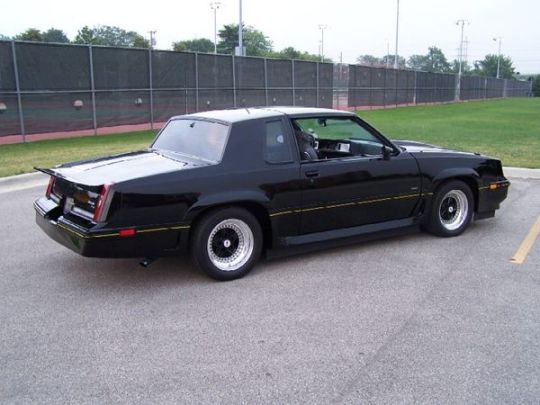
31 notes
·
View notes
Photo

If you could pick only one 1968 GM Muscle car…. #chevelle #gto #442 #grandsport #musclecar #musclecars #musclecarsdaily #ss396 #pontiacgto #oldsmoblie #buickgs #pontiac #buick #1968 #1968gto #cutlass #cutlass442 #buickskylark #oldscutlass #olds #68chevelle #1968chevelle #buicklove https://www.instagram.com/p/CmCgWqLJPM7/?igshid=NGJjMDIxMWI=
#chevelle#gto#442#grandsport#musclecar#musclecars#musclecarsdaily#ss396#pontiacgto#oldsmoblie#buickgs#pontiac#buick#1968#1968gto#cutlass#cutlass442#buickskylark#oldscutlass#olds#68chevelle#1968chevelle#buicklove
4 notes
·
View notes
